Cover Page
Title Page
ISBN 0471708585
CONTENTS (with page links)
PART I INTRODUCTORY MATERIAL
1 Linear systems theory
2 Probability theory
3 Least squares estimation
4 Propagation of states and covariances
PART II THE KALMAN FILTER
5 The discretetime Kalman filter
6 Alternate Kalman filter formulations
7 Kalman filter generalizations
8 The continuous-time Kalrnan filter
9 Optimal smoothing
10 Additional topics in Kalman filtering
PART III THE H∞ FILTER
11 The H∞ filter
12 Additional topics in H∞ filtering
PART IV NONLINEAR FILTERS
13 Nonlinear Kalman filtering
14 The unscented Kalman filter
15 The particle filter
Appendixes, References, Index
Acknowledgments
Acronyms
List of algorithms (with page links)
Introduction
PART I INTRODUCTORY MATERIAL
1 Linear systems theory
2 Probability theory
3 Least squares estimation
4 Propagation of states and covariances
PART II THE KALMAN FILTER
5 The discretetime Kalman filter
6 Alternate Kalman filter formulations
7 Kalman filter generalizations
8 The continuous-time Kalrnan filter
9 Optimal smoothing
10 Additional topics in Kalman filtering
PART III THE H∞ FILTER
11 The H∞ filter
12 Additional topics in H∞ filtering
PART IV NONLINEAR FILTERS
13 Nonlinear Kalman filtering
14 The unscented Kalman filter
15 The particle filter
Appendix A: Historical perspectives
Appendix B: Other books on Kalman filtering
Appendix C: State estimation and the meaning of life
References
INDEX (with page links)
A,B,C
D,E,F,G,H,I,J,K
L,M
N,O,P
Q,R,S
T,U,V,W,Y
Back Page
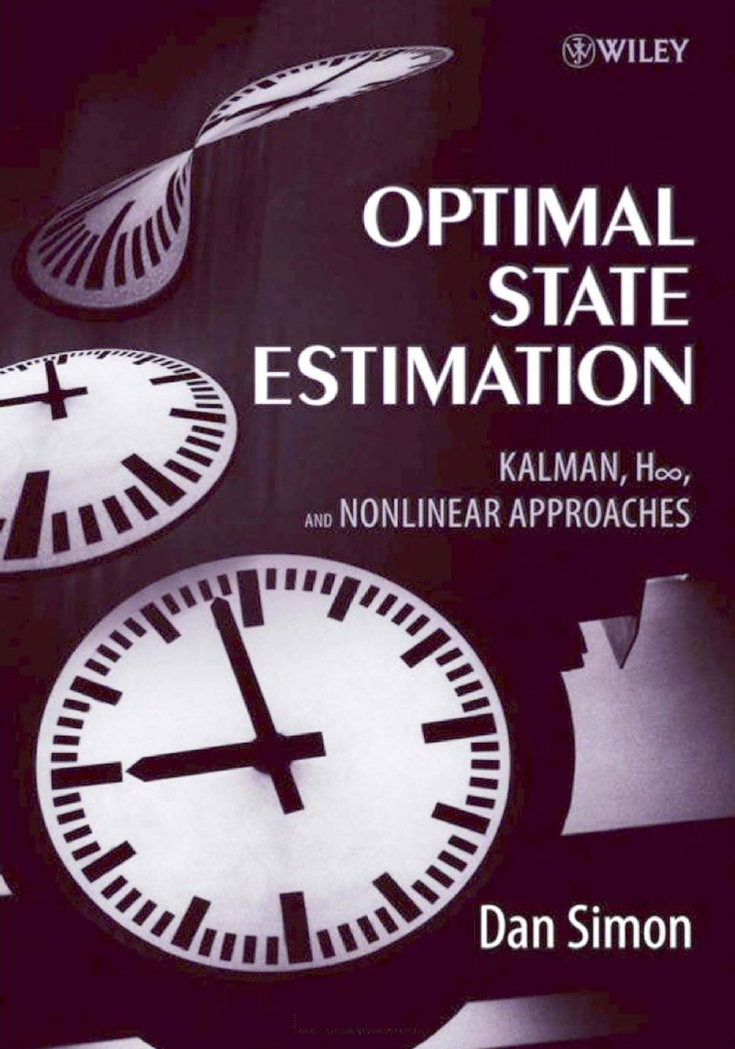
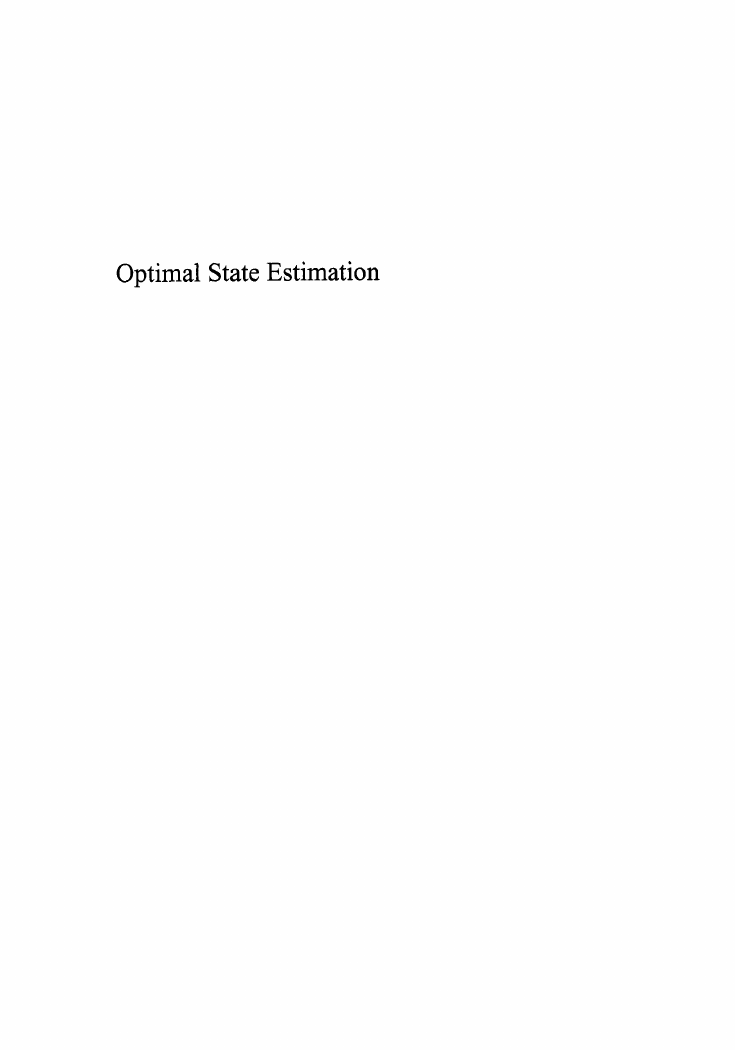
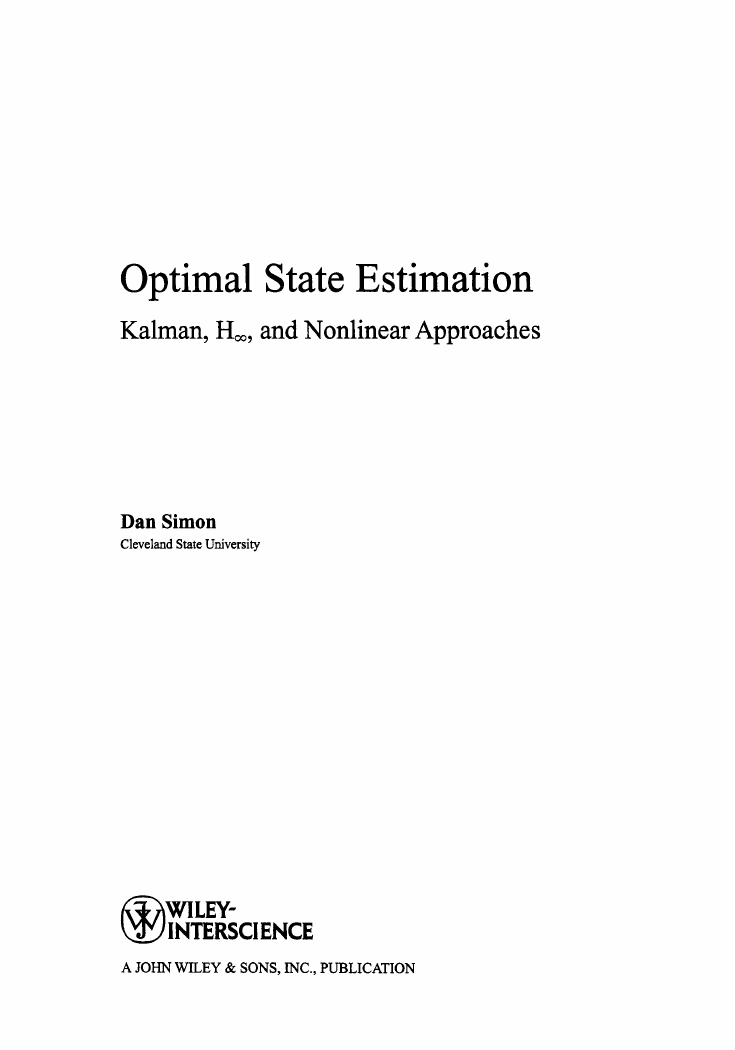
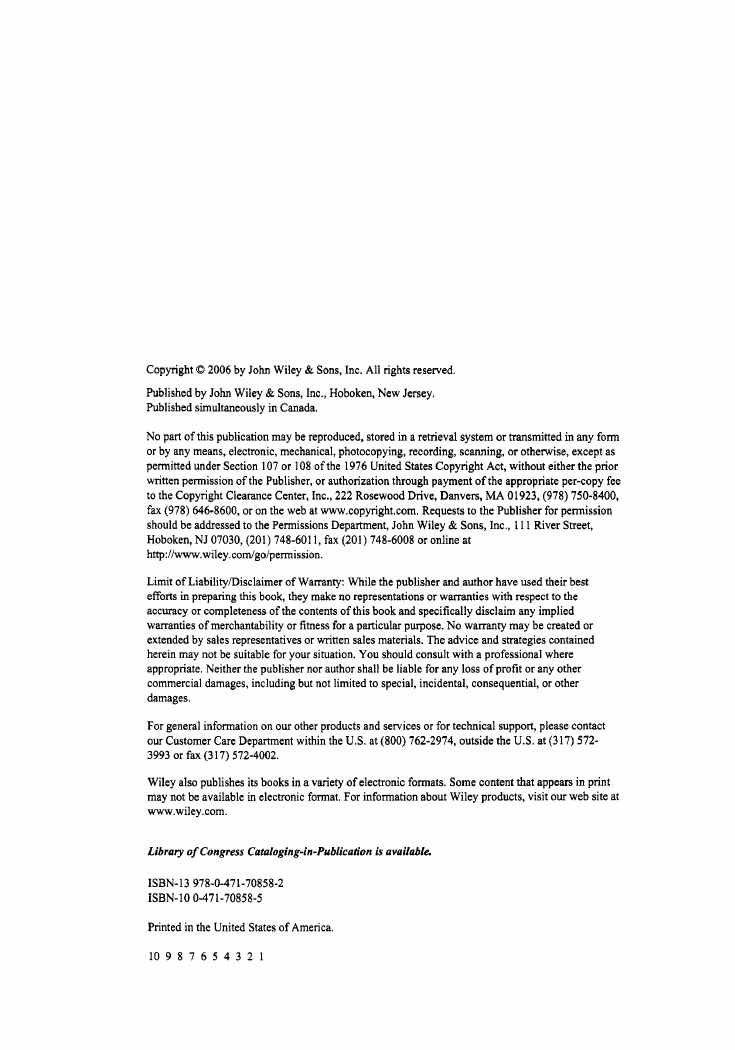
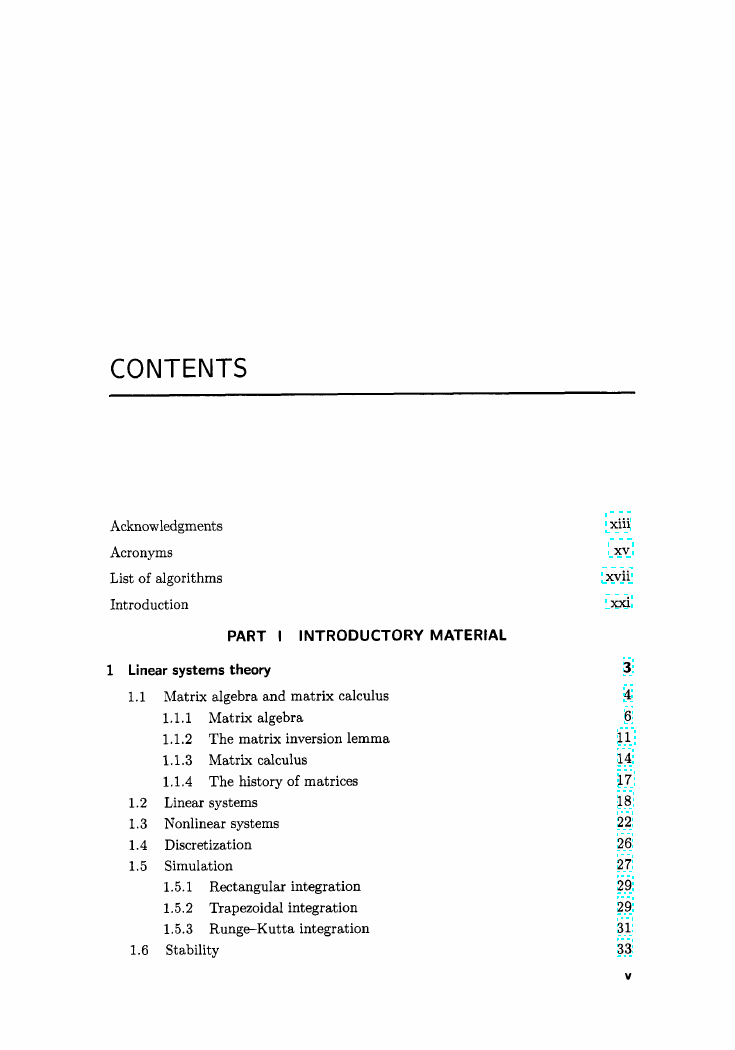
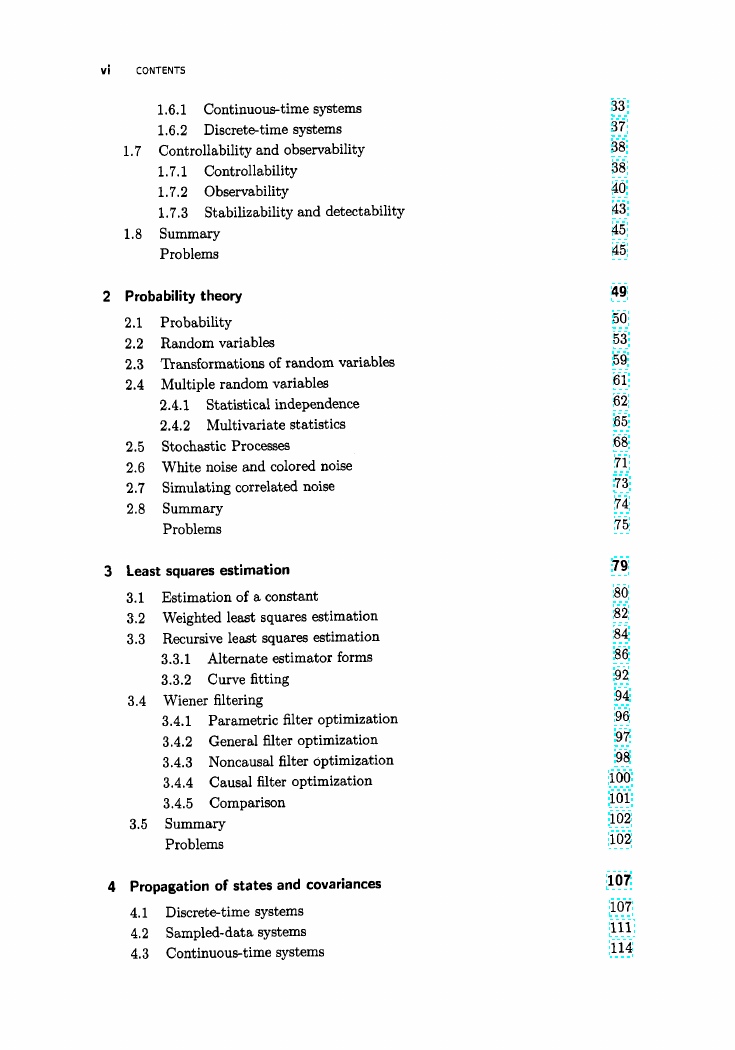
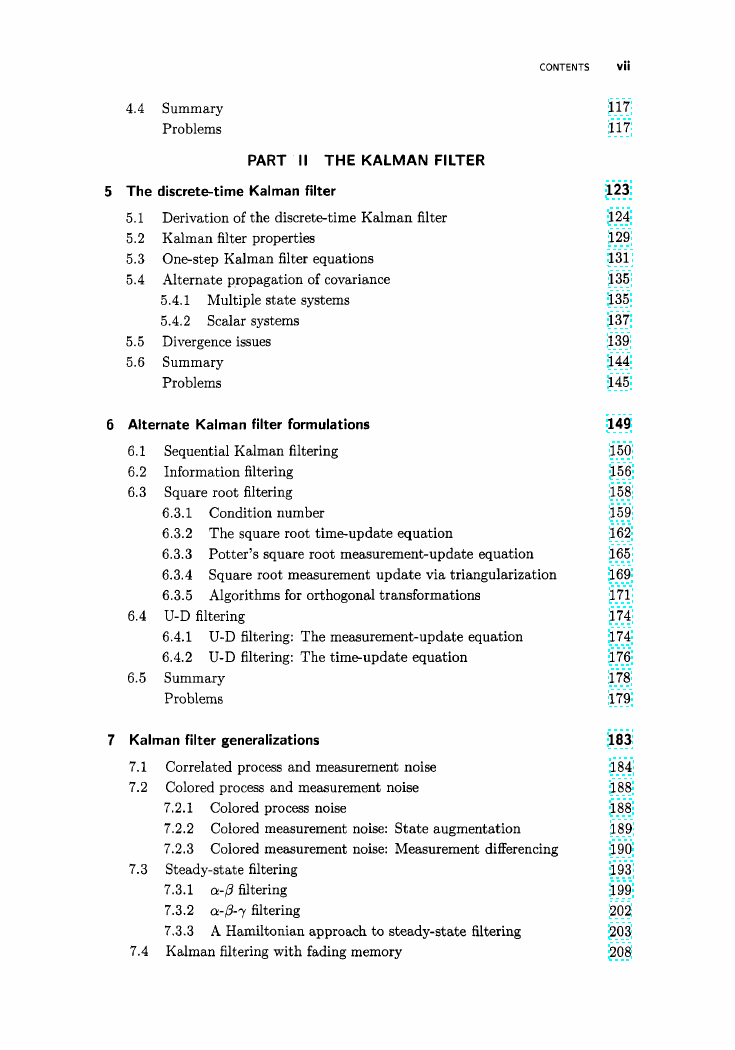
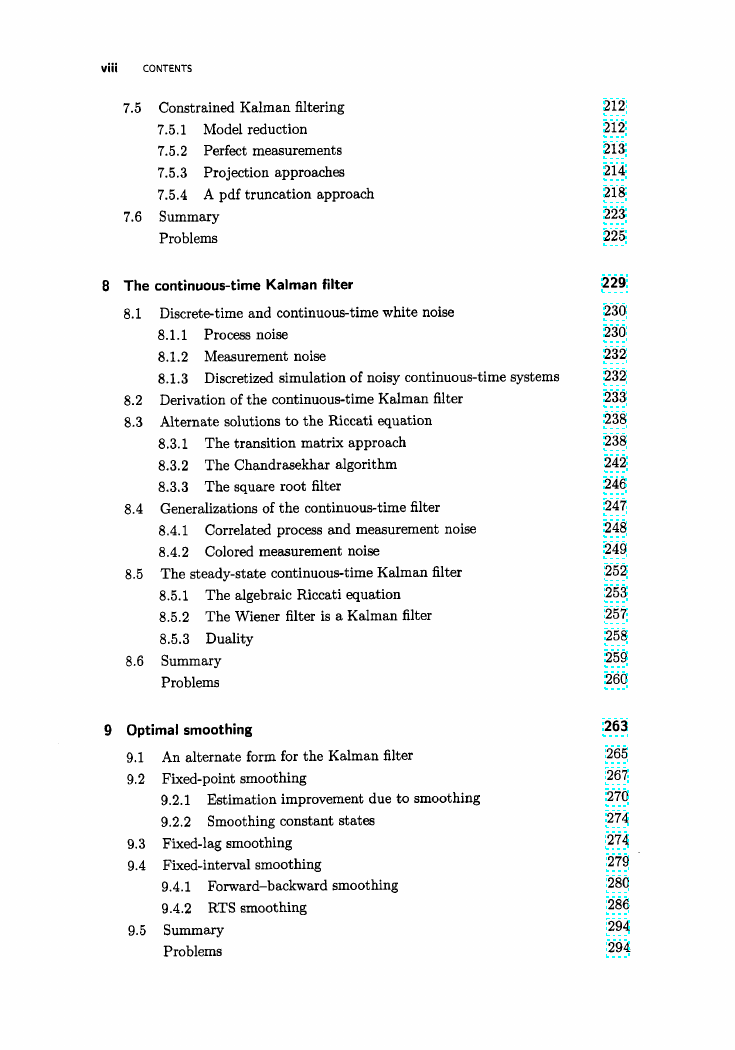








 2023年江西萍乡中考道德与法治真题及答案.doc
2023年江西萍乡中考道德与法治真题及答案.doc 2012年重庆南川中考生物真题及答案.doc
2012年重庆南川中考生物真题及答案.doc 2013年江西师范大学地理学综合及文艺理论基础考研真题.doc
2013年江西师范大学地理学综合及文艺理论基础考研真题.doc 2020年四川甘孜小升初语文真题及答案I卷.doc
2020年四川甘孜小升初语文真题及答案I卷.doc 2020年注册岩土工程师专业基础考试真题及答案.doc
2020年注册岩土工程师专业基础考试真题及答案.doc 2023-2024学年福建省厦门市九年级上学期数学月考试题及答案.doc
2023-2024学年福建省厦门市九年级上学期数学月考试题及答案.doc 2021-2022学年辽宁省沈阳市大东区九年级上学期语文期末试题及答案.doc
2021-2022学年辽宁省沈阳市大东区九年级上学期语文期末试题及答案.doc 2022-2023学年北京东城区初三第一学期物理期末试卷及答案.doc
2022-2023学年北京东城区初三第一学期物理期末试卷及答案.doc 2018上半年江西教师资格初中地理学科知识与教学能力真题及答案.doc
2018上半年江西教师资格初中地理学科知识与教学能力真题及答案.doc 2012年河北国家公务员申论考试真题及答案-省级.doc
2012年河北国家公务员申论考试真题及答案-省级.doc 2020-2021学年江苏省扬州市江都区邵樊片九年级上学期数学第一次质量检测试题及答案.doc
2020-2021学年江苏省扬州市江都区邵樊片九年级上学期数学第一次质量检测试题及答案.doc 2022下半年黑龙江教师资格证中学综合素质真题及答案.doc
2022下半年黑龙江教师资格证中学综合素质真题及答案.doc